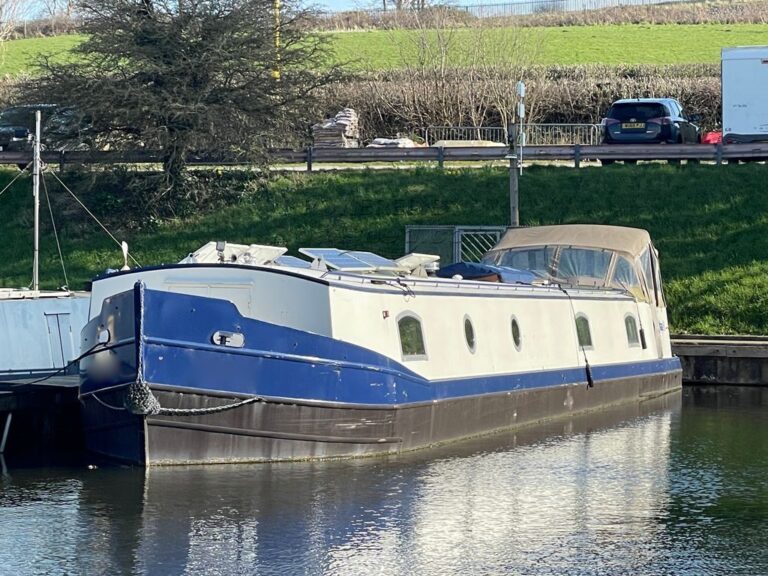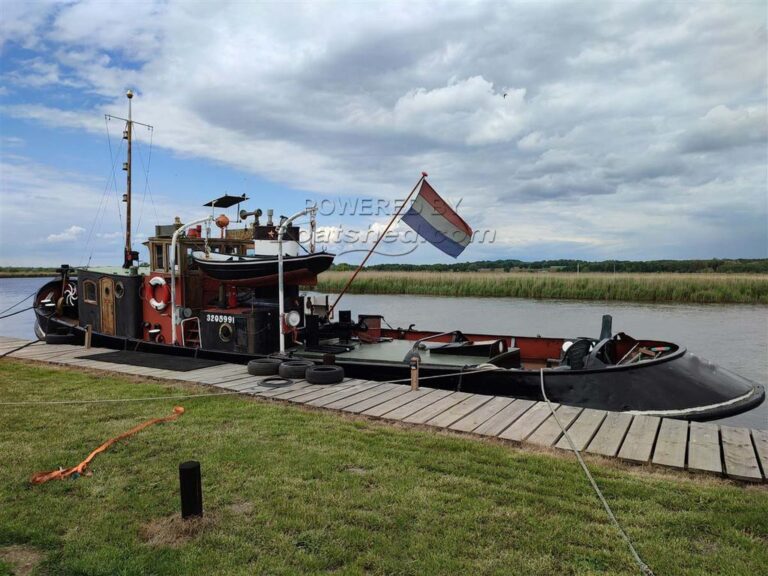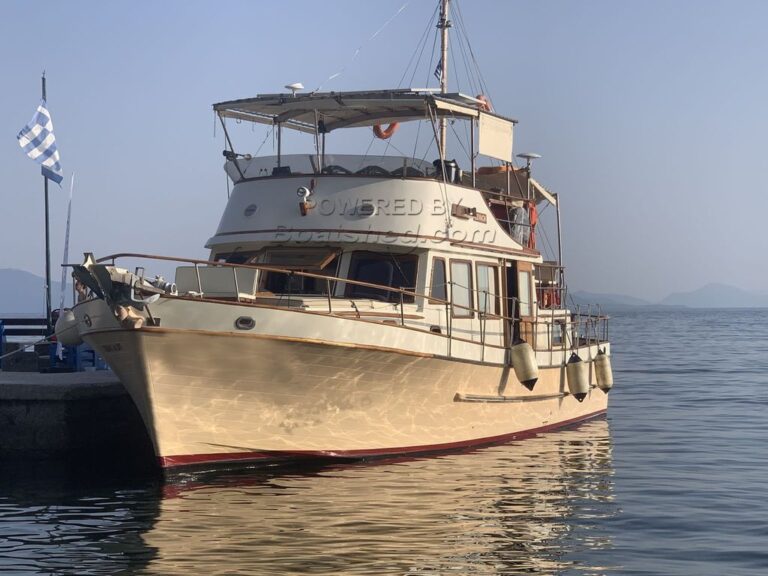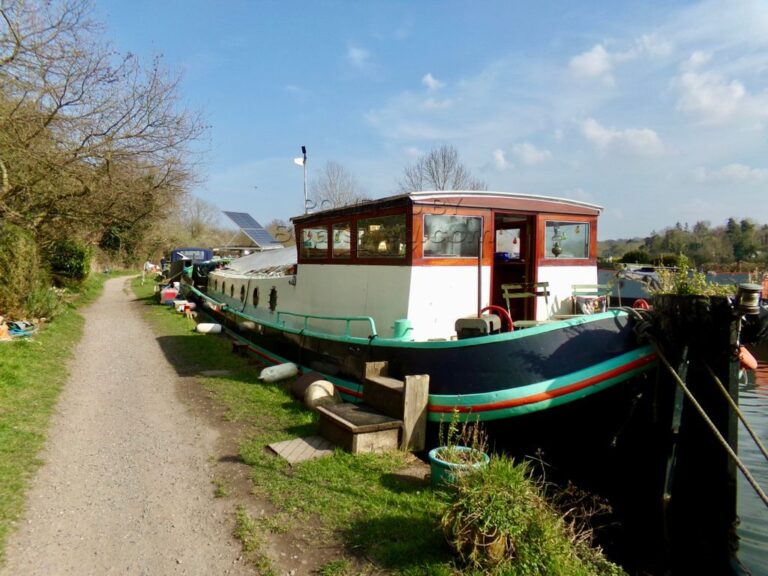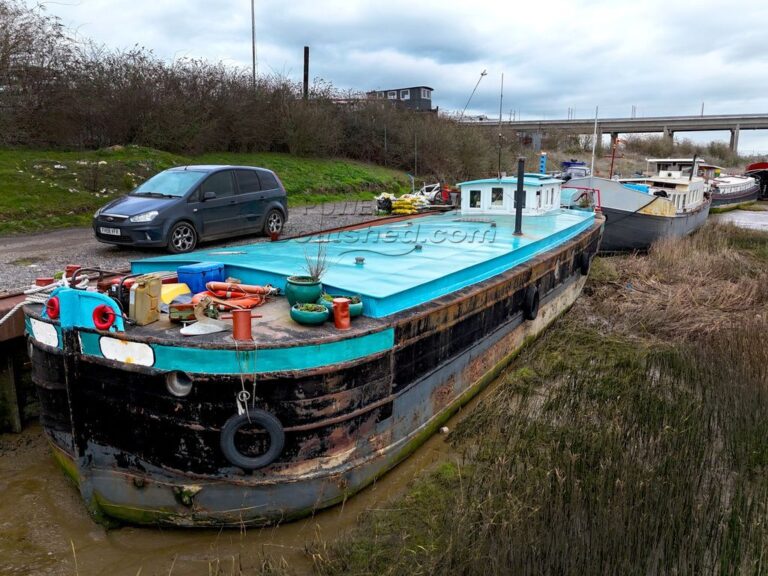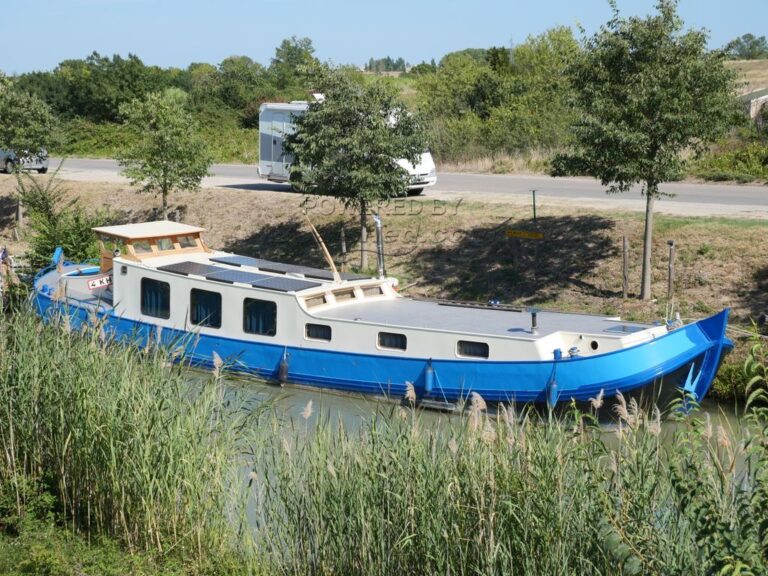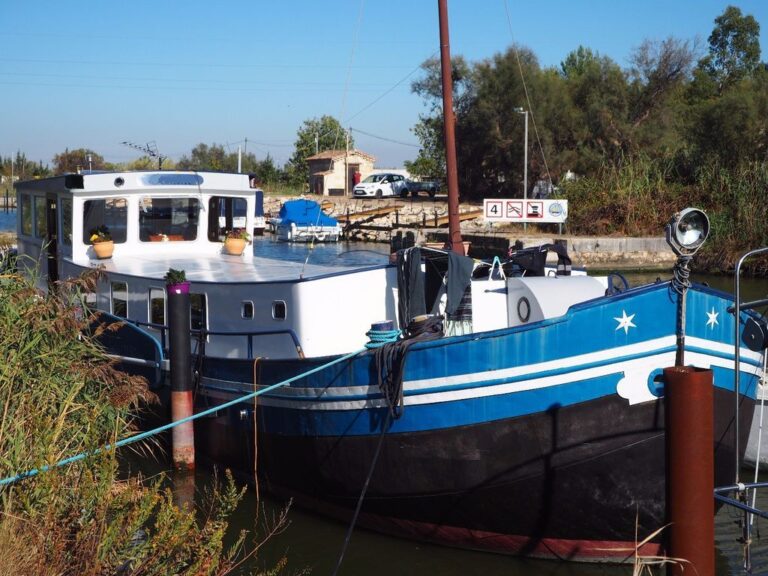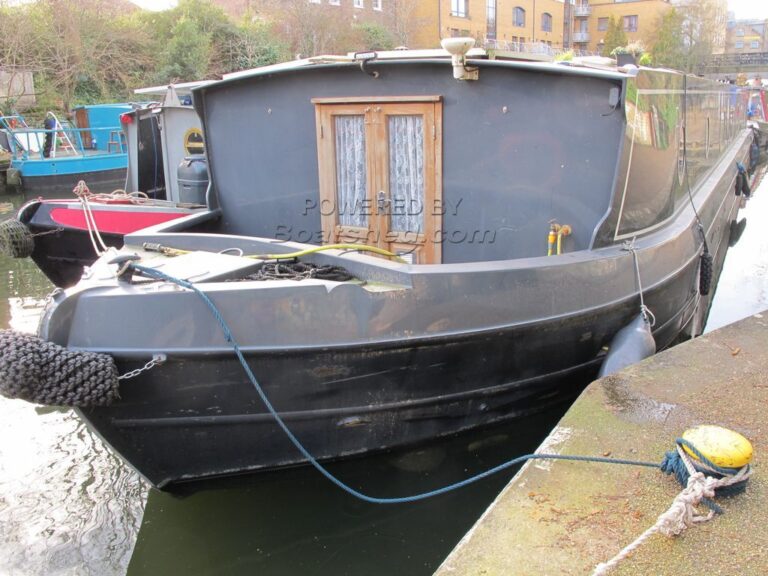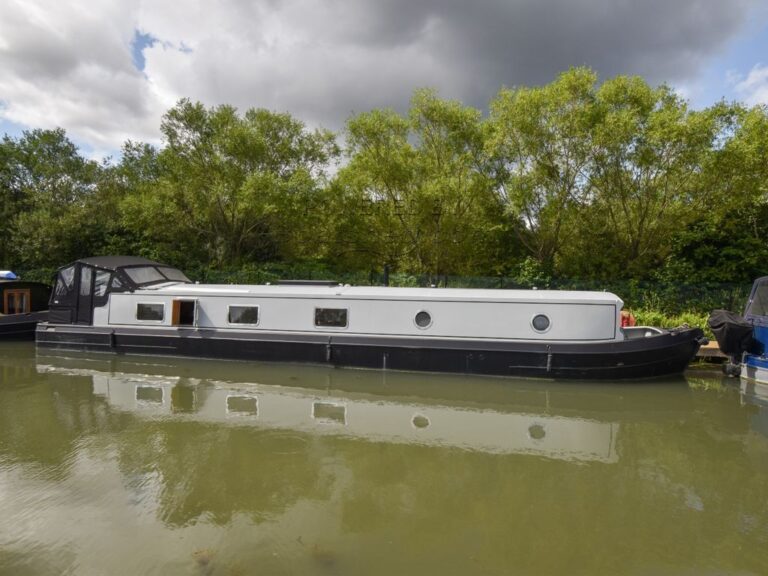Photo Credit – Tina Rolf
Introduction
Picture yourself aboard a sailboat, the wind howling, waves crashing against the hull, and the sky darkening ominously. In such moments, knowing how to navigate rough weather can mean the difference between safety and absolute disaster.
Navigating the vast expanse of the ocean is a thrilling adventure, but it comes with its share of challenges, particularly when faced with rough weather conditions. As sailors, we understand the importance of seamanship skills and preparedness in ensuring a safe and successful voyage. In this comprehensive guide, we will delve into the essential strategies and techniques for weathering storms at sea, offering insights gleaned from years of experience and expertise. From understanding weather patterns to deploying emergency procedures, each aspect of seamanship plays a critical role in our ability to navigate through rough weather with confidence and resilience.
Throughout this guide, we will explore the fundamental principles of seamanship, from securing loose items and preparing the vessel for rough weather to mastering essential techniques for handling extreme conditions. We will discuss the importance of safety protocols for crew members, including wearing life jackets, staying tethered to the boat, and establishing effective communication procedures. Additionally, we will outline emergency procedures for extreme weather situations, such as abandoning ship or calling for assistance, and emphasise the significance of practicing drills and maintaining a well-equipped ditch bag. Finally, we will conclude with a reflection on the resilience and adaptability required of sailors in challenging conditions, underscoring the importance of prioritising safety and making prudent decisions when facing uncertain weather forecasts. Through knowledge, preparation, and a commitment to safety, we can navigate through rough weather with confidence and emerge stronger and more capable sailors.
Understanding Weather Patterns
As seasoned sailors, we understand all too well the pivotal role that weather forecasts play in ensuring a safe and successful voyage. The ability to interpret these forecasts accurately can mean the difference between smooth sailing and finding oneself in the midst of a tempest. Weather forecasts provide us with invaluable information about impending atmospheric conditions, including wind speed and direction, wave heights, precipitation, and atmospheric pressure changes. By comprehending these forecasts, we can anticipate potential challenges and make informed decisions to mitigate risks before setting sail.
Moreover, understanding weather forecasts allows us to plan our routes strategically, taking advantage of favourable weather windows while avoiding hazardous conditions. Whether embarking on a short coastal cruise or a transoceanic passage, sailors must carefully analyse forecasted weather patterns along their intended course. By identifying areas of potential instability or severe weather, we can adjust our course, timing, or even seek refuge in a safe harbour until conditions improve. This proactive approach not only enhances the safety of the crew and vessel but also maximises efficiency and minimises fuel consumption by harnessing favourable winds and currents.
In essence, mastering the art of interpreting weather forecasts is a cornerstone of seamanship, embodying the age-old adage of “forewarned is forearmed.” It empowers sailors to navigate the unpredictable forces of nature with confidence and prudence, fostering a deeper connection with the elements and a profound respect for the sea. As stewards of the maritime realm, we must remain vigilant in our efforts to stay abreast of changing weather conditions, continually honing our skills and knowledge to ensure the safety and success of our voyages.
In the vast expanse of the open ocean, sailors encounter a diverse array of weather patterns, each with its own unique characteristics and implications for seafaring. One of the most prevalent weather patterns is the notorious trade winds, dependable belts of prevailing easterly winds found in tropical regions. These trade winds, often associated with fair weather and moderate seas, have historically facilitated transoceanic voyages and trade routes. However, sailors must also be wary of the potential for squalls and sudden wind shifts within these regions, which can catch the unprepared mariner off guard.
Another common weather phenomenon that profoundly influences sailing conditions is the presence of low-pressure systems, also known as cyclones or depressions. These atmospheric disturbances, characterised by spiralling winds and intense precipitation, can wreak havoc on maritime activities, generating towering waves and gale-force winds. Sailors navigating near the periphery of a low-pressure system must exercise caution and vigilance, as rapidly changing weather conditions can pose significant challenges to vessel stability and crew safety. Understanding the typical movement and development of these systems is essential for devising effective navigation strategies and avoiding their destructive path.
Furthermore, coastal sailors must contend with the capricious nature of sea breezes and land-sea temperature differentials, which give rise to localised weather phenomena such as coastal fog and afternoon thunderstorms. While these weather patterns may seem relatively benign compared to the tempests of the open ocean, they present unique challenges and hazards for mariners navigating confined waters. Fog, for instance, can reduce visibility to near-zero levels, necessitating the use of radar and sound signals for navigation. Likewise, thunderstorms can produce sudden gusts of wind and dangerous lightning strikes, requiring sailors to seek shelter and take appropriate safety precautions until the storm passes. Understanding the nuances of these coastal weather patterns is indispensable for sailors plying their trade along the intricate tapestry of shorelines and estuaries.
In the realm of maritime navigation, access to reliable and timely weather information is an indispensable asset for sailors navigating the high seas. Fortunately, a plethora of resources exists to aid seafarers in their quest for meteorological insight, ranging from traditional forecasts to cutting-edge weather apps harnessing the power of modern technology. Among the most esteemed sources of weather intelligence are the offerings of the UK Met Office, renowned for their accuracy and comprehensiveness in catering to the needs of mariners. Two invaluable resources provided by the Met Office are the Inshore Waters Forecast and the Shipping Forecast, both of which offer detailed insights into prevailing weather conditions along coastal and offshore routes.
For those venturing beyond coastal waters into the open ocean, the venerable Shipping Forecast stands as a beacon of maritime forecasting excellence, broadcasting vital weather information every four hours via the HM Coastguard over VHF channels and MF/HF frequencies. This venerable forecast, steeped in maritime tradition, provides sailors with essential data on wind direction and speed, sea state, visibility, and atmospheric pressure, enabling them to make informed decisions regarding voyage planning and safety protocols. Whether navigating the choppy waters of the North Sea or the tranquil expanses of the Atlantic Ocean, sailors rely on the Shipping Forecast as a trusted ally in their quest for safe passage.
In the modern era of interconnected technology, sailors have access to an array of digital tools and weather apps designed to enhance situational awareness and streamline the process of weather analysis. These apps leverage real-time data feeds, satellite imagery, and advanced forecasting models to deliver up-to-the-minute weather updates directly to sailors’ fingertips, empowering them to make informed decisions on the fly. Whether plotting a course or seeking shelter from an approaching storm, these weather apps serve as invaluable companions for sailors navigating the ever-changing dynamics of the maritime environment. As technology continues to evolve, so too will the capabilities of these digital resources, ensuring that sailors remain equipped with the knowledge and tools necessary to weather any storm that Mother Nature may unleash upon the high seas.
Preparing Your Vessel
Preparing your vessel is a fundamental aspect of seamanship, essential for ensuring safety and readiness regardless of the forecasted conditions. While the importance of thorough preparation becomes particularly apparent when facing the prospect of rough weather, the recommendations for preparing your vessel are universally applicable, serving as pillars of prudent seamanship in any sailing endeavour. Whether embarking on a leisurely coastal cruise or undertaking a transoceanic passage, the steps outlined for securing loose items, ensuring sails are set up with the ability to reef, checking rigging, and ensuring proper equipment stowage are integral components of vessel management and safety. By embracing a proactive approach to vessel preparation, sailors not only enhance their resilience in the face of adverse weather but also cultivate a culture of preparedness and professionalism that underpins every successful voyage at sea.
Securing Loose Items
Before embarking on a voyage into the unpredictable realm of rough weather, it is imperative to ensure that all loose items aboard the vessel are properly secured. Loose gear and equipment can quickly become hazardous projectiles in high winds and turbulent seas, posing a threat to both crew and vessel. Begin by stowing smaller items such as tools, spare parts, and personal belongings in designated lockers or compartments below deck, minimizing the risk of them becoming airborne during rough conditions. Larger items such as deck chairs, dinghies, and loose lines should be lashed down or securely fastened to prevent them from shifting or being swept overboard by the fury of the elements. By diligently securing loose items before setting sail, sailors can mitigate the risk of damage to the vessel and ensure the safety of all onboard.
Reefing Sails
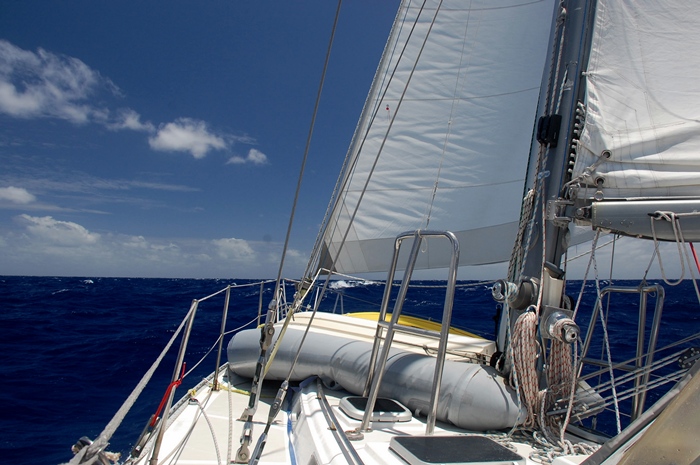
Photo Credit – Behan
In preparation for navigating rough weather, it is essential to ensure that the vessel’s sails are rigged with the ability to reef effectively. Reefing, the process of reducing the area of exposed sail, is crucial for maintaining control and stability in high winds. Begin by inspecting the sail inventory and identifying reef points on each sail, where reefing lines can be attached to gather excess fabric and reduce sail area. Familiarise yourself with the reefing system onboard, including the location of reefing lines, cleats, and reefing points on the mast and boom. Practice reefing manoeuvres in calm conditions to ensure that all crew members are proficient in executing the procedure swiftly and safely when faced with rough weather. By preparing sails with the ability to reef, sailors can adapt to changing conditions and maintain optimal sail balance and performance while navigating through storms at sea.
Checking Rigging
A thorough inspection of the vessel’s rigging is paramount before venturing into rough weather, where the forces exerted on the mast and rigging can be magnified exponentially. Begin by visually inspecting all standing rigging, including shrouds, stays, and terminals, for signs of wear, corrosion, or damage. Pay close attention to wire terminals and swage fittings, ensuring that they are properly secured and free from any visible defects or deformities. Check for proper tension in the rigging by gently tapping the shrouds and stays with a tuning hammer or tuning fork, listening for a clear, resonant tone indicative of proper tension. Inspect all running rigging, including halyards, sheets, and control lines, for fraying, chafing, or fouling, and replace any worn or damaged lines as necessary. By conducting a thorough inspection of the vessel’s rigging before setting sail, sailors can identify and address potential issues proactively, minimising the risk of rig failure and ensuring the structural integrity of the mast and rigging under the demanding conditions of rough weather.
Ensuring Proper Equipment Stowage
Effective stowage of essential equipment and supplies is essential for maintaining order and functionality aboard the vessel when navigating through rough weather. Begin by organising and stowing equipment in designated lockers and compartments, taking care to distribute weight evenly to maintain proper trim and stability. Secure heavy items such as anchors, spare fuel cans, and provisions below deck or in the bilge to prevent them from shifting or causing imbalance during rough seas. Stow emergency equipment such as life jackets, flares, and first aid kits in easily accessible locations, ensuring that all crew members know their whereabouts and how to access them in an emergency. Secure loose gear and equipment on deck using lashings, bungee cords, or netting to prevent them from being swept overboard or becoming hazards in high winds. By ensuring proper equipment stowage before setting sail, sailors can minimise clutter, optimise weight distribution, and enhance safety and functionality aboard the vessel when navigating through rough weather.
Seamanship Techniques
In the face of rough weather at sea, mastering essential seamanship techniques is paramount for maintaining control and ensuring the safety of both crew and vessel. Three indispensable techniques for navigating through rough weather include “heaving to,” “lying ahull,” and “using storm sails.” Each method offers unique advantages and can be deployed strategically depending on the prevailing conditions.
Heaving To
Heaving to is a time-tested manoeuvre used to effectively halt a vessel’s forward progress and maintain a stable position relative to the wind and waves. To execute this technique, begin by bringing the vessel head-to-wind and trimming the sails to backwind. Next, luff the jib or headsail and ease the mainsail to leeward, allowing the vessel to slowly drift downwind while maintaining a slight angle to the wind. Finally, adjust the rudder as necessary to maintain a comfortable and stable position. Heaving to provides several benefits, including reducing the vessel’s drift, minimising strain on the rigging, and providing a relatively stable platform for crew rest or emergency repairs.
Lying Ahull
Lying ahull is a passive technique employed when heaving to is not feasible or practical due to extreme conditions or vessel design. To lie ahull, simply reduce sail area to a minimum and allow the vessel to drift freely with the wind and waves. Secure all loose items on deck and ensure that the crew is safely below deck or secured in the cockpit. While lying ahull offers less control over the vessel’s orientation compared to heaving to, it can provide a respite from heavy weather and reduce the risk of capsize or broaching in extreme conditions. However, it’s essential to monitor the vessel’s drift and be prepared to take action if necessary to avoid hazards or collisions.
Using Storm Sails
When faced with truly severe weather conditions, deploying storm sails can help maintain control and stability while reducing the risk of damage to the vessel’s primary sails. Storm sails, such as storm jibs or trysails, are specially designed for use in high winds and heavy seas, featuring smaller dimensions and reinforced construction to withstand the forces exerted by rough weather. To deploy storm sails, securely stow the primary sails and hoist the storm sails using dedicated halyards and sheets. Trim the sails conservatively to maintain a balanced and controlled course, adjusting as necessary to optimise performance and minimise strain on the rigging. By utilising storm sails, sailors can safely navigate through the most extreme weather conditions, preserving the integrity of the vessel and ensuring the well-being of all onboard.
Mastering these essential seamanship techniques equips sailors with the knowledge and skills needed to navigate through rough weather with confidence and resilience. Whether heaving to, lying ahull, or deploying storm sails, each technique offers a valuable tool for maintaining control and safety when faced with the formidable forces of the sea.
Safety Protocols
Ensuring the safety of all crew members is of paramount importance when navigating through rough weather conditions at sea. Establishing and adhering to comprehensive safety protocols can mean the difference between a manageable situation and a potential disaster. Key safety measures include wearing life jackets, staying tethered to the boat, and establishing effective communication procedures.

Wearing Life Jackets
The importance of wearing life jackets cannot be overstated, especially when facing rough weather or the possibility of capsizing. Life jackets provide buoyancy and support in the water, significantly increasing the chances of survival in the event of an emergency. Before setting sail, ensure that each crew member is equipped with a properly fitted and US Coast Guard-approved life jacket. Encourage crew members to wear their life jackets at all times while on deck, particularly during challenging weather conditions when the risk of falling overboard is heightened.
Staying Tethered to the Boat
Staying tethered to the boat is another crucial safety measure that helps prevent crew members from being swept overboard in rough seas. Before departing, equip each crew member with a safety harness and tether, allowing them to move about the deck while remaining securely attached to the vessel. Ensure that lifelines and attachment points are in good condition and capable of withstanding the forces exerted by heavy weather. Emphasize the importance of staying clipped in at all times while on deck, especially when handling sails, navigating rough seas, or moving about in challenging conditions.
Establishing Communication Procedures
Effective communication is essential for maintaining situational awareness and coordinating actions among the crew, particularly during times of heightened stress or emergency situations. Establish clear communication procedures before setting sail, including designated hand signals, radio channels, and emergency protocols. Ensure that all crew members are familiar with communication equipment onboard, including VHF radios, EPIRBs, and satellite phones, and know how to operate them effectively in an emergency. Encourage open communication among the crew, fostering a culture of teamwork and cooperation that can be invaluable when facing adversity at sea.
Maintaining Situational Awareness and Remaining Calm Under Pressure
In addition to these specific safety protocols, maintaining situational awareness and remaining calm under pressure are essential qualities for all crew members when navigating through rough weather. Encourage crew members to stay vigilant and alert, continuously monitoring weather conditions, vessel performance, and the actions of nearby vessels. Remind them to trust their training and instincts, and to communicate any concerns or observations promptly. In challenging situations, emphasize the importance of remaining calm and composed, as panic can exacerbate an already tense situation and impair decision-making abilities. By prioritising safety, maintaining situational awareness, and fostering a calm and cohesive crew environment, sailors can navigate through rough weather with confidence and resilience, ensuring the safety and well-being of all onboard.
Emergency Procedures
Preparing for extreme weather situations requires sailors to have well-defined emergency procedures in place, including protocols for abandoning ship or calling for assistance. Additionally, practicing drills and ensuring the availability of a well-equipped ditch bag are vital components of preparedness. Moreover, drilled procedures like Man Overboard are crucial for instilling confidence and ensuring the safety of the crew.
Abandoning Ship
In the event of an imminent threat to the safety of the vessel or crew, such as irreparable damage or flooding, abandoning ship may be the only option. Ensure that all crew members are familiar with the procedures like launching life rafts or other survival craft. Assign specific roles and responsibilities to crew members to facilitate a swift and orderly evacuation, and conduct regular drills to ensure that everyone knows what to do in an emergency. Pack a ditch bag with essential survival equipment, including food, water, first aid supplies, signalling devices, and personal documents, to ensure that vital resources are readily available in the event of abandonment.
Calling for Assistance
In situations where immediate evacuation is not necessary but assistance is required, such as medical emergencies or mechanical failures, calling for assistance is paramount. Ensure that all crew members are familiar with the operation of communication equipment onboard, including VHF radios, EPIRBs, and satellite phones. Establish clear communication protocols and designate specific crew members to handle distress calls and relay information to authorities or nearby vessels. Practice using communication equipment regularly to maintain proficiency and troubleshoot any technical issues that may arise during an emergency.
Practicing Drills
Regular practice of emergency drills, including Man Overboard drills, is essential for building crew confidence and ensuring a coordinated response in challenging situations. Conduct Man Overboard drills periodically to familiarize crew members with the procedures for deploying lifesaving equipment, executing search patterns, and effecting a swift recovery of a crew member who has fallen overboard. Emphasize the importance of clear communication, teamwork, and quick decision-making during drills, and debrief afterwards to identify areas for improvement and reinforce best practices. By practicing drills regularly, sailors can instil a sense of preparedness and resilience that will serve them well in the face of adversity at sea.
Preparing for extreme weather situations requires sailors to have robust emergency procedures in place, including protocols for abandoning ship or calling for assistance. Practice drills regularly, ensure the availability of a well-equipped ditch bag, and emphasise the importance of drilled procedures like Man Overboard for crew confidence and safety. By prioritizing preparedness and training, sailors can navigate through extreme weather conditions with confidence and resilience, ensuring the safety and well-being of all onboard.
Final Thoughts
Navigating through rough weather conditions demands a comprehensive understanding of seamanship skills and a commitment to preparedness that extends beyond mere anticipation of the forecast. Throughout this guide, we’ve underscored the significance of essential seamanship techniques, from heaving to and lying ahull to deploying storm sails, as indispensable tools for maintaining control and safety when confronting the tempestuous forces of the sea. Moreover, we’ve emphasised the critical importance of safety protocols, including wearing life jackets, staying tethered to the boat, and establishing effective communication procedures, to ensure the well-being of all crew members in challenging circumstances.
It’s essential to recognise that preparedness is not merely a static state but an ongoing process that requires continuous learning and practice. Seamanship skills are honed through experience, training, and a commitment to lifelong learning. As sailors, we must remain vigilant in our efforts to expand our knowledge base, refine our techniques, and adapt to evolving conditions at sea. By investing time and effort in learning and practicing seamanship skills, sailors can enhance their safety and confidence when facing rough weather conditions, ultimately enabling them to navigate through adversity with skill and resilience.
Furthermore, fostering a culture of preparedness within the maritime community is paramount for ensuring the safety of all who venture out to sea. Encourage fellow sailors to prioritise seamanship training, participate in safety drills, and share knowledge and experiences to collectively strengthen our collective resilience in the face of adversity. By supporting one another and fostering a spirit of camaraderie and cooperation, we can create safer seas for ourselves and future generations of sailors.
In closing, let us remember that the sea is both our playground and our domain of work. Respect for its power and unpredictability is paramount, and the mastery of seamanship skills is our greatest ally in navigating its vast expanse. As we embark on our maritime journeys, let us do so with humility, preparedness, and a steadfast commitment to safety. Together, let us continue learning, practicing, and refining our seamanship skills to enhance our safety and confidence at sea, ensuring that we may weather any storm that comes our way. Smooth sailing, fair winds, and safe harbours await those who dare to venture forth, equipped with the knowledge and skills to navigate through rough weather with courage and resolve.
As we draw this guide to a close, I encourage readers to share their own experiences and insights for weathering storms at sea. Each sailor brings a unique perspective and set of skills to the maritime community, and by sharing our knowledge and lessons learned, we can collectively enhance our preparedness and resilience in the face of adversity. Additionally, I invite readers to explore additional resources and training opportunities to further improve their seamanship skills. Whether through formal training programs, online courses, or participation in sailing clubs and communities, there are countless avenues for sailors to deepen their understanding of seamanship principles and refine their abilities. By investing in continuous learning and skill development, we can navigate through rough weather conditions with confidence and emerge stronger and more capable sailors. Fair winds and following seas to all who embark on the journey of seamanship mastery.
In the face of challenging conditions at sea, sailors are called upon to embody the qualities of resilience and adaptability that define our craft. While mastering seamanship skills and preparing for rough weather are essential components of safe navigation, perhaps the greatest wisdom lies in knowing when to exercise caution and prudence. As the old adage goes, “The best sailors are those who know when not to sail.” In times of uncertainty or impending storms, the most courageous decision a sailor can make is to err on the side of caution and choose to wait ashore for more favourable conditions.
By prioritising safety over bravado and demonstrating the patience to wait for fair winds and calm seas, we honour the age-old tradition of seamanship and ensure that every voyage is undertaken with the utmost care and consideration. May we all find strength in our resilience and adaptability, and may we always sail with wisdom and humility, knowing that the safety of ourselves and our crewmates is the highest priority on the journey of the sea. Smooth sailing and safe harbours await those who navigate with prudence and foresight.
Share your thoughts – email hello@sailors.project1031.com
References and Resources
- RYA – Royal Yachting Association: The RYA offers extensive resources on seamanship, safety at sea, and navigation. Their training courses are recognized globally and cover everything from beginner to advanced sailing skills. Learn More at RYA
- Sail Training International: Provides information and resources on sail training, including safety protocols, seamanship, and leadership at sea. An excellent resource for both novice sailors and seasoned mariners. Visit Sail Training International
- International Maritime Organization (IMO): The IMO’s guidelines on safety at sea are crucial for all sailors. Their resources on maritime safety procedures, including emergency protocols, are invaluable for ensuring the safety of vessels and crew. Explore IMO Resources
- PredictWind: Advanced weather forecasting technology for sailors, offering real-time weather data and forecasts. PredictWind’s tools are crucial for route planning and weather strategy. Check Weather with PredictWind
- Ocean Navigator: An online magazine and resource center focusing on offshore sailing, navigation, and vessel safety. Features articles, tips, and techniques from experienced sailors and maritime professionals. Read Articles at Ocean Navigator
- Sailing World: Provides the latest news, race coverage, and expert advice on performance sailing, gear, and safety. A great resource for competitive sailors and those looking to improve their seamanship. Visit Sailing World
- Cruising World: Offers resources on cruising life, including safety tips, destination guides, and boat maintenance advice. Ideal for sailors planning extended voyages or seeking to explore new horizons. Explore Cruising World

